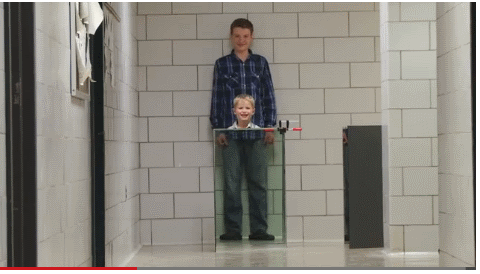June 7, 2013
John Howell, a Professor of Physics at the University of Rochester, decided to tackle an unusual DIY project. With the help of his 14 year-old son, Benjamin, he built three simple, but surprisingly effective optical cloaking devices with inexpensive, off-the-shelf materials.
Cloaking is a common topic both in popular culture and in the scientific community. Cloaking means hiding an object from view at specific frequencies, and different types of cloaking have been recently demonstrated in labs around the world. Howell and his son built three different devices to show that it is possible to do optical, unidirectional cloaking cheaply, and for large objects.
In a paper they recently posted on the online paper depository, arxiv, they explain the strengths and limitations of the three approaches they used. The first device used plexiglass, out of which they fashioned L-shaped containers filled with water. The second used four $3 lenses to show optical cloaking similar to what a group from Cornell University recently showed, except that the Howells demonstrated spatial cloaking instead of temporal cloaking. The third device, which will be familiar to many amateur magicians, used an assembly of inexpensive, hardware-store mirrors (see demo in the video above). In the paper, the Howells stressed that the device, although it has some drawbacks, is "clearly scalable to very large dimensions."
John Howell's usual area of research is in quantum physics, including quantum information, weak measurement, entanglement and slow light. Intrigued by some of the recent cloaking work, he thought he would try a few experiments outside of his normal field with some help from his son.
The single direction in which these can be viewed is probably the biggest limitation, but for some uses that might not be a problem, for example earth-orbiting satellites. Large-scale applications, however, are likely to cost a bit more than the $150 that the Howells spent on this project.
To find out more about how these devices work, read the PDF of the paper.
To read more about John Howell's research, see his group's page.
And in this video is the explanation how it's work:













